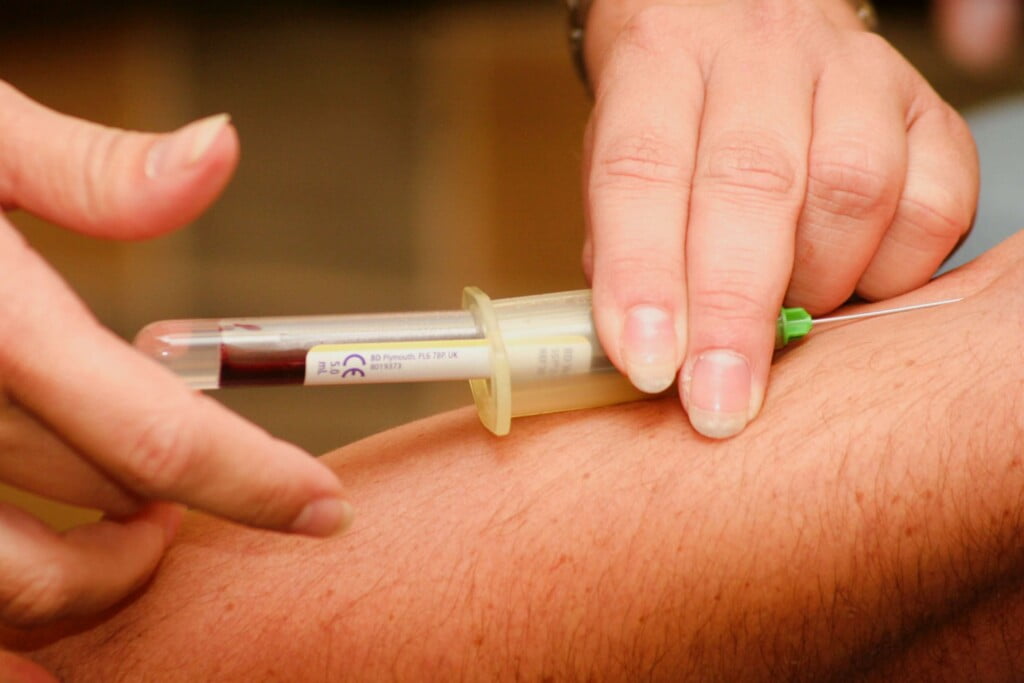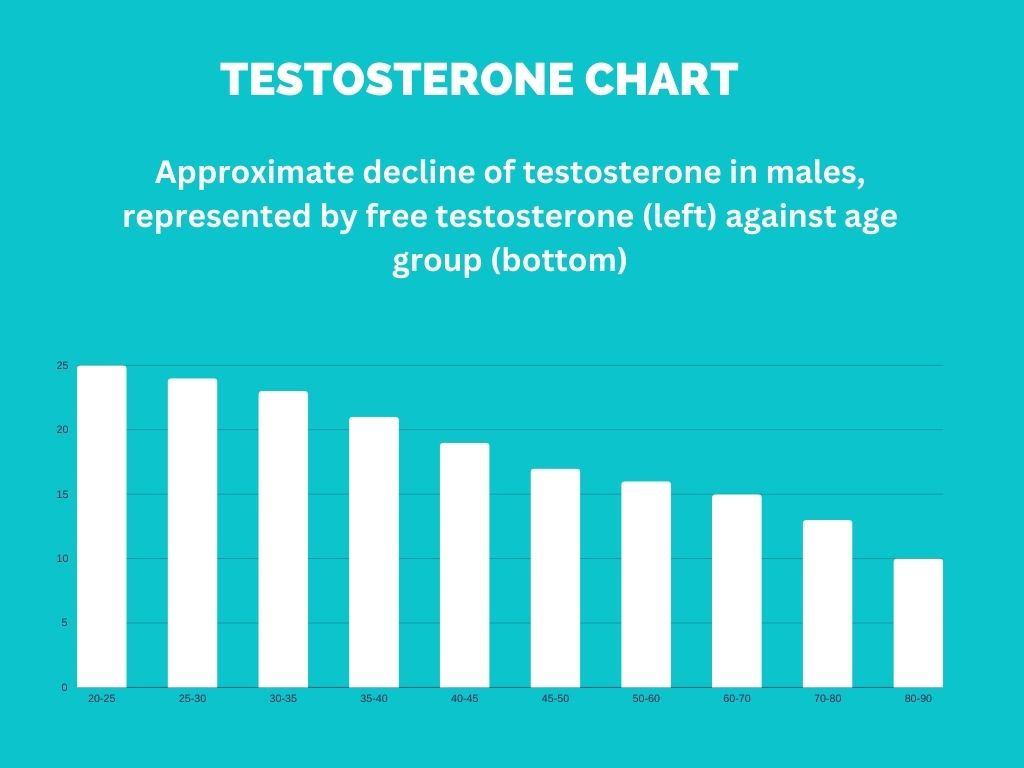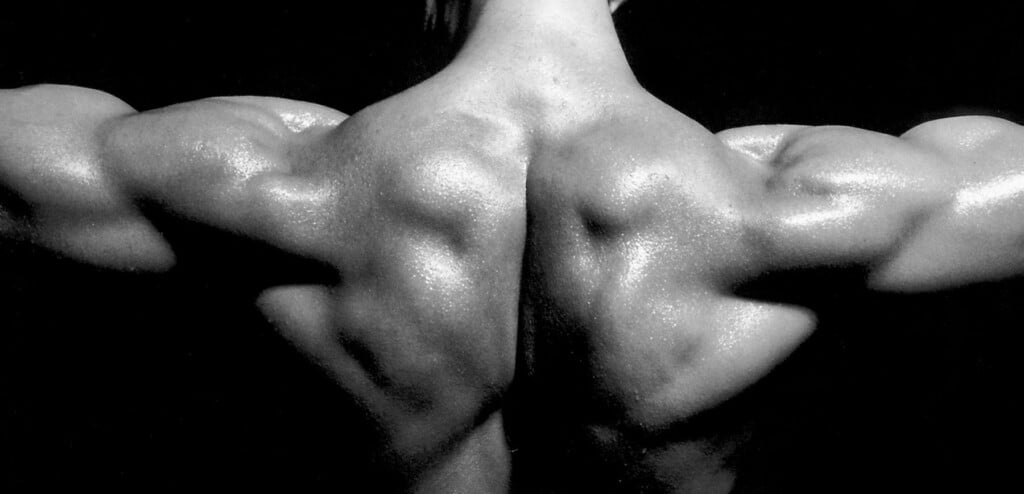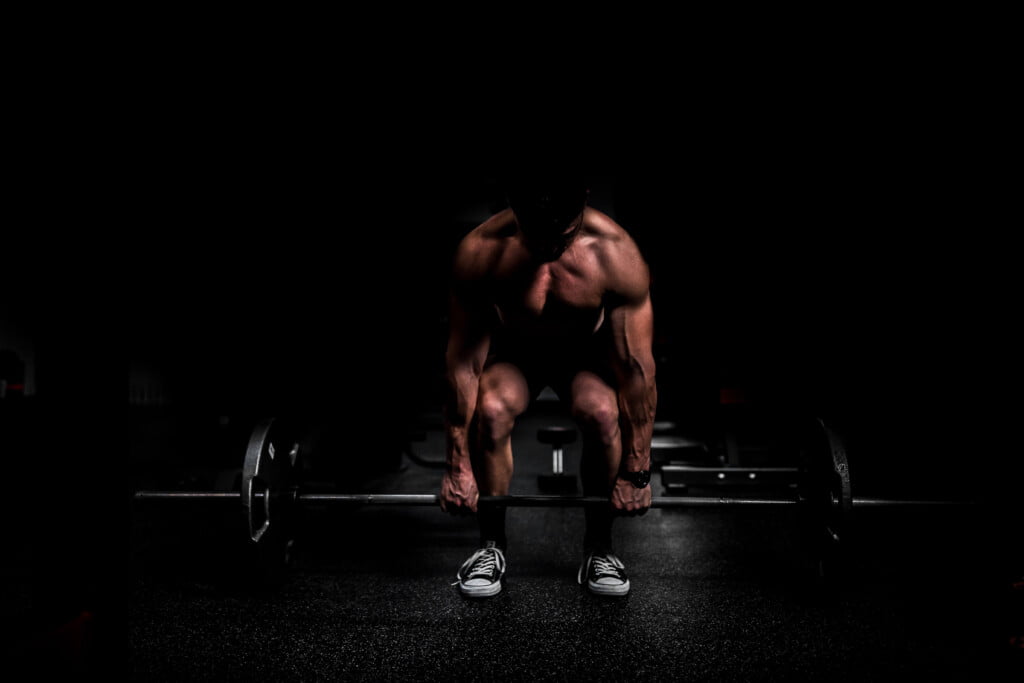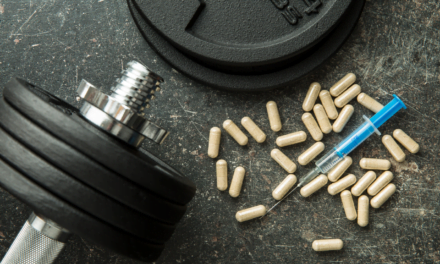Testosterone plays a hugely important role in bodily growth, repair, and overall vitality and is a popular medical treatment for men aiming to slow down the ageing process. In recent years, it has become popular in the bodybuilding community, as it helps increase muscle mass, strength, and physical endurance while encouraging quicker recovery times and improved athletic performance.
It is possible to boost your testosterone levels naturally, although the results may be negligible. A far more effective method is through the use of a supplement regime known as testosterone replacement therapy.
However, this certainly isn’t something you can just stumble into without being suitably informed. While you don’t need to bury yourself in lots of reading materials, you do need to grasp the basics. The first thing you should know is that there are different types of testosterone supplements available, known as ‘esters’.
Through this guide, we shall explain the basics of testosterone esters, the role they play on the human body, and why you might need them. But first, what is this intriguing, life enriching hormone, and how does it work?
What Is Testosterone, Exactly?
Technically speaking, testosterone is two things: both a steroid (by chemical structure) and an androgenic sex hormone (biologically). Legally speaking, It is regulated as a controlled substance in many countries, though availability can vary globally.
Metaphorically speaking, testosterone might be described as the essence of manhood.
Contrary to common belief, both men and women produce testosterone, with the former typically producing 5-10 milligrams daily and the latter producing significantly less. In men, about 95% of testosterone is generated in the testicles, while women produce up to 50% in the ovaries. The adrenal glands also contribute to its production in both genders.
Testosterone is also synthesised within body tissues, although this only slightly impacts overall levels – testes and ovaries are the main powerhouses behind testosterone production.
What Does It Do?
You can think of testosterone almost like a key that enters cells, binding to the androgen receptors to impact cellular activity. This key unlocks various commands that encourage muscle growth, bone density, hair growth, and various other functions.
For anyone interested in the science of it, on a more complex level, it also acts as a prohormone in various tissues, converting into more potent forms like dihydrotestosterone or oestrogen under certain enzymes. Rather conveniently, this transformation is more effective in areas with abundant fat tissue.
The effects of testosterone are quite wide-ranging and far-reaching, helping out in various areas such as:
- Body Fat: Reduces fat storage and increases fat burning.
- Muscles: Increases protein synthesis, muscle mass, and strength.
- Skin: Supports collagen production and hair growth.
- Bone: Promotes red blood cell production and bone growth.
- Brain: Boosts cognition, memory, libido, and emotions.
- Heart: Improves blood flow and cardiac output.
- Kidneys: Stimulates red blood cell production through erythropoietin (EPO).
- Male Sex Organs: Aids sperm production, penis growth, and function.
The benefits do not stop there, however, as testosterone also increases the ‘insulin-like growth factor’, which is associated with better health and lower mortality rates. For men with low levels, supplementing can enhance energy, muscle, and libido while also reducing fat and helping out with depression.
It is worth noting that low testosterone is by no means uncommon: across all age groups, one in 50 men has low levels. For middle-aged men, as many as 40% have low levels of testosterone. This disparity happens because our ability to create testosterone falls by one or two per cent each year. The older we get, the less we have.
A simple blood test will confirm your testosterone levels: let’s take a look at the numbers in closer detail.
Testosterone Levels
Healthy testosterone levels vary and change throughout the day, although typically, men experience the highest levels in the morning, which gradually diminish as the day progresses. This fluctuation is regulated by bursts of gonadotropin-releasing hormone, which is released naturally every couple of hours.
For late adolescent and young adult men up to 40 years of age, normal total testosterone levels range from 260-920 nanograms per deciliter. Women in the same age group usually have levels between 8-60 nanograms per deciliter.
There is a caveat to this, however, because only about 25 percent of these amounts are biologically active. A small fraction exists as ‘free testosterone’, with the remainder loosely bound to albumin or tightly bound to serum hormone-binding globulin (SHBG).
Testosterone (and other androgens) typically decrease SHBG levels in the body, while estrogens increase it. Owing to that, even if your total testosterone is within the normal range, a high binding rate to SHBG can notably diminish the hormone’s effectiveness and the muscular response to it.
In other words, while you might be within range, you might still experience symptoms of low testosterone if a significant portion of your hormone is bound and inactive.
Symptoms of Low Testosterone
Many people go through life completely unaware that their testosterone levels may be low. As noted, a blood test will reveal low testosterone levels – but there are signs of low testosterone that you can look out for.
Let’s take a look at those signs. If you are experiencing more than a few of these symptoms at the same time, it may be worth obtaining a blood test to find out where your levels are.
All Genders
- General lethargy and fatigue
- Lower sex drive
- Reduced enjoyment from sex (more so for women)
- Depression
- Lack of focus
- Reduced muscle mass
- Reduced strength
- Loss of body hair
- An increase in body fat
- Mood swings
- Aggression
- Poor sleep
Males Only
- General issues with erections
- Lack of ‘morning glory’ (morning erections)
- Random hot and cold flushes
- Man boobs
The following testosterone chart demonstrates the progressive loss of free testosterone in males over the years.
How To Take Testosterone
Testosterone can be taken in various forms, including injections, patches, gels, and creams – although injections are the most common method and can be easily self-administered.
Injections are also widely considered the most effective method, delivering testosterone directly into the bloodstream, guaranteeing fast, consistent absorption.
Patches and gels have their use also and are applied daily to the skin, offering a non-invasive option for getting the hormone into the body. Creams are another alternative, absorbed through the skin, though they require careful application to avoid transferring to others.
Each method has its benefits, but injections are typically favoured for their effectiveness and direct impact on testosterone levels. Although we have no concrete stats to back this assertion up, it would be fair to suggest that the vast majority of bodybuilders choose injections over patches and creams.
What Are Testosterone Esters?
Injectable testosterone is available in various forms, known as testosterone esters, which are designed to stay in the body for a longer period of time.
The main testosterone esters are as follows:
In each case, the testosterone hormone is exactly the same, with the only difference being the ester, which could be thought of as a carrier that is attached to the hormone, delivering the testosterone into the cells. Each ester acts differently, leading to slightly different results.
The ester is attached to the testosterone molecule, and the body has to break it down to utilise the hormone. This creates a timed release, which can help control hormone levels and avoid uncomfortable peaks and lows.
All testosterone esters have varying half-lives, influencing how long they act in your system. Testosterone cypionate and testosterone enanthate are often preferred due to their balance of effectiveness and duration, while testosterone propionate is known for its rapid action, requiring more frequent administration due to its shorter duration in the body.
Let’s take a look at each one in closer detail.
Testosterone Cypionate
This testosterone ester is renowned for its extended half-life of 8 days, allowing the body to metabolise the ester and hormone over approximately a week. Testosterone cypionate injections are usually administered once or twice a week to maintain stable testosterone levels. Out of 100 mg of testosterone cypionate, about 68 mg is pure testosterone, with the remainder being the ester component.
Athletes and bodybuilders often choose testosterone cypionate for its ability to maintain stable blood testosterone levels with less frequent injections, aiding in consistent muscle growth and performance enhancement.
The longer activity period of testosterone cypionate makes it ideal for longer cycle durations, reducing the frequency of dosing and making it a good option for sustained muscle building and maintenance. We have covered everything you need to know about testosterone cypionate in this comprehensive guide.
Testosterone Propionate
Known for its rapid action, testosterone propionate reaches peak levels in the blood within hours and is fully metabolised in three days. To keep levels consistent, injections are typically administered every 2-3 days. This quick metabolism makes testosterone propionate advantageous for swiftly stabilising and optimising blood testosterone levels, with 100 mg yielding approximately 93 mg of testosterone.
Testosterone propionate is commonly taken by athletes and bodybuilders who seek quicker results and those who prefer shorter cycles due to its rapid peak in testosterone levels. The frequent administration allows for rapid adjustment and control over blood testosterone levels, catering to precise performance and physique goals.
The fast-acting nature of testosterone cypionate is particularly beneficial before competitions or during cutting phases for maintaining muscle mass while reducing body fat. Check out our testosterone propionate cycle guide for a more detailed overview.
Testosterone Enanthate
Metabolised within about 4-5 days, testosterone enanthate can linger in trace amounts for up to two weeks. The injection schedule often spans every five days, with a starting dose usually between 100 to 200 mg, depending on individual responses, and injected intramuscularly.
Testosterone enanthate offers a balance between the rapid action of propionate and the prolonged effect of cypionate: the best of both, without leaning too far in either direction. It’s often selected for moderate cycle lengths, providing steady hormonal levels conducive to muscle growth and recovery.
Athletes and bodybuilders might prefer this testosterone ester for its effectiveness in maintaining consistent anabolic environments – an important aspect of ongoing muscle development and strength enhancement. Our comprehensive guide to testosterone enanthate covers everything in more detail.
Which Testosterone Do You Need?
Deciding on the best testosterone for your own needs and goals is not as simple as ‘which is best’. Each ester comes with its unique set of advantages and potential drawbacks. As a result, the right choice heavily depends on personal goals, bodily reactions, and specific needs.
While some people might find they respond well to testosterone propionate – owing to its quick-acting nature – others might prefer the more steady release of testosterone cypionate or enanthate, both of which are particularly beneficial during off-season bulking and for more consistent strength gains.
In cutting phases, shorter esters like propionate are often preferred as they allow for quick adjustments. By the same token, testosterone cypionate or enanthate might be selected during bulking phases or by strength athletes for their longer-lasting effects.
Either way (and without stating the obvious too much), it is extremely important to manage dosages wisely and monitor oestrogen levels to maintain balance and general well-being.
Experimenting under safe conditions is sometimes a good idea, and never start two new esters simultaneously; if an adverse reaction occurs, it would be challenging to determine the culprit. Just introduce one new element at a time, allowing for careful observation of how your body reacts.
Managing Oestrogen Levels
As you integrate testosterone into your regimen, you will also need to manage oestrogen levels alongside it. Testosterone can create more oestrogen in the body, leading to an imbalance that might affect gains and even general well-being.
Regular monitoring through blood tests can maintain an optimal hormonal balance, helping to prevent side effects commonly associated with high estrogens, such as water retention, increased body fat, and mood swings.
It’s probably best to consult with a healthcare professional to tailor a safe and effective approach.
Testosterone Esters & Muscle Performance
Moving onto the part of this guide that many of you will be most interested in: how exactly does testosterone build muscle?
Testosterone acts as an anabolic steroid to stimulate muscle growth, enhancing muscle fibres by activating and increasing muscle precursor cells (known as satellite cells) that enlarge existing fibres or merge to form new ones.
Testosterone also boosts the number of nuclei in muscle fibres, increasing the number of receptors available for testosterone binding. This interaction is especially potent when combined with training and protein diets. Obviously, the result of more muscle fibres means one thing: enhanced muscle performance.
If you still aren’t convinced, It gets better. Testosterone also serves as an anti-catabolic agent, preventing catabolic hormones like cortisol from binding to their receptors. This dual function not only aids in muscle building but also accelerates recovery after exercise. So, not only is testosterone an important aspect of muscle mass development and maintenance, but it also assists with muscle health and recovery.
New findings also reveal that testosterone increases intracellular calcium release, which boosts muscle contractions.
How Testosterone Affects Body Fat & Weight
Testosterone greatly influences body fat, weight, and overall body composition in both men and women. In men, low levels of testosterone are linked to increased weight gain, lower caloric burn, more prevalent blood glucose disorders, and a decrease in insulin sensitivity, adversely affecting metabolic regulation.
Similarly, women with unusually high levels of testosterone often face adverse metabolic effects.
Testosterone also works within the central nervous system to regulate metabolism, influencing caloric burn and blood glucose maintenance. Interestingly, a study involving men aged 20-36 who received a shot of testosterone enanthate weekly for six months – all without changing exercise habits – showed a 92% increase in testosterone levels, just under 10% increase in lean mass, and over 15% decrease in body fat.
Further studies indicate that testosterone can boost lean muscle mass, diminish body fat, and enhance insulin sensitivity, potentially reducing body weight by up to twelve pounds over two years without altering diet or exercise. This all points towards a substantial decrease in body fat and an increase in lean body mass following testosterone therapy, attributing to improved fat and glucose metabolism and muscle growth.
If you were unsure about testosterone before, those figures and stats might prick the ears of many of you – and with good reason; testosterone really is that effective.
Bottom Line
Testosterone is a huge aspect of bodybuilding, vital for promoting muscle growth, strength, and vitality. Make no mistake about it: without adequate testosterone levels, you are leaving muscle gains on the table.
Testosterone has become a commonly used supplement in gyms up and down the kingdom because so many adult male levels are lower than they should be. You might need to embark on a cycle yourself – because many bodybuilders do.
The journey to an improved life starts here. Visit our store for the best testosterone in the UK, and begin your journey into improved moods, increased libido, greater verve, and awesome gains right now!
Author

Dr. Aditya K. Sharma
I am Dr. Aditya Sharma, a dedicated urologist specializing in kidney transplants and advanced urological surgeries. My career is driven by a passion for delivering exceptional care and pioneering surgical techniques. Outside the operating room, I have a keen interest in studying the effects of anabolic steroids on bodybuilding, seeking to understand the fine line between enhancing performance and maintaining health.


